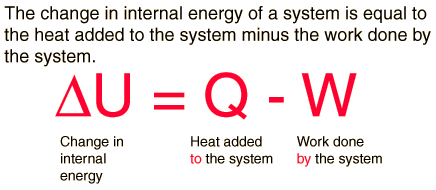Wednesday, April 24, 2013
Temperature control
Temperature control is a process in which change of temperature of a space is measured or otherwise detected, and the passage of heat energy into or out of the space is adjusted to achieve a desired average temperature
Wednesday, March 20, 2013
Diesel generator
A diesel generator is the combination of a diesel engine with an electrical generator (often an alternator) to generate electrical energy. Diesel generating sets are used in places without connection to the power grid, as emergency power-supply if the grid fails, as well as for more complex applications such as peak-lopping, grid support and export to the power grid. Sizing of diesel generators is critical to avoid low-load or a shortage of power and is complicated by modern electronics, specifically non-linear loads.
Governor OR Speed Limiter
A governor, or speed limiter, is a device used to measure and regulate the speed of a machine, such as an engine. A classic example is the centrifugal governor, also known as the Watt or fly-ball governor, which uses weights mounted on spring-loaded arms to determine how fast a shaft is spinning, and then uses proportional control to regulate the shaft speed.
Tuesday, January 22, 2013
Simple Gas Turbine Cycle
A schematic diagram of a simple gas turbine power plant is shown in figure. Air is drawn from the atmosphere into the compressor, where it is compressed reversibly and adiabatically. The relatively high pressure is then used in burning the fuel in the combustion chamber. The air fuel ratio is quite high (about 60:1) to limit the temperature of the burnt gases entering the turbine. The gases then expand isentropically in the turbine. A portion of the work obtained from the turbine is utilized to drive the compressor and the auxiliary drive, and rest of the power output is the net power of the gas turbine plant.
A gas turbine plant works using a Brayton or joule cycle. This cycle was originated by joule, a British engineer for use in a hot air reciprocating engine and later in about 1870 an American engineer George Brayton tried this cycle in a gas turbine. This cycle consists of two constant pressures and two adiabatic processes. The P-V and T-S diagrams of the cycle are as shown in figure.
Process 1 – 2: isentropic compression in the compressor
Process 2 – 3: constant pressure heat addition in the combustion chamber
Process 3 – 4: isentropic expansion in the turbine
Process 4 -1: constant pressure heat rejection in the atmosphere or cooling of air in the intercooler (closed cycle).
Monday, January 7, 2013
Second law of Thermodynamics
There are two classical statements of the second law of thermodynamics:
| Kelvin & Planc"No (heat) engine whose working fluid undergoes a cycle can absorb heat from a single reservoir, deliver an equivalent amount of work, and deliver no other effect" |
| Clausius "No machine whose working fluid undergoes a cycle can absorb heat from one system, reject heat to another system and produce no other effect" |
Zeroth law of Thermodynamics
If system A and system B are individually in thermal equilibrium with system C, then system A is in thermal equilibrium with system B
If two systems are in thermal equilibrium with a third, they are in thermal equilibrium with each other
If two systems are in thermal equilibrium with a third, they are in thermal equilibrium with each other
Subscribe to:
Comments (Atom)



